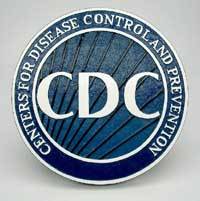Life Site News
January 22, 2014

A new report from the Centers for Disease Control (CDC) shows approximately 62 percent of gay men who know they have HIV/AIDS continue to engage in sexual relations without using a prophylactic, a behavior that can spread AIDS.
The report, which was released on the Friday after Thanksgiving, analyzed data gathered in 2011.
According to the report, the percentage of men with HIV/AIDS having sex with other men without a condom had increased from 55 percent in 2005, to 57 percent in 2008, to 62 percent today.
CDC spokesperson Nikky Mayes told LifeSiteNews.com in an e-mail that the “new analysis of data suggests concerning signs of sexual risk for HIV infection among gay and bisexual men in 20 major U.S. cities.”
The surveys cited in the report examine men having sex with men (MSM) for a period of 12 months.
In the report, many MSM said they tried to reduce their risk of HIV/AIDS and other sexually transmitted infections by only having sex with other men who are HIV-positive.
However, the CDC noted this is still risky, because sexual partners may be unaware of their status, or may mislead about their health.
Trying to get HIV-positive gay men to use condoms may prove difficult, as their use has plummeted among homosexuals. Anal sex without condoms increased by 20 percent among homosexual men between 2005 and 2011.
As a result, the rate of AIDS infection among homosexual males has remained an epidemic. Between 2008 and 2010, the number of homosexuals with HIV/AIDS rose by 12 percent, with an especially large increase among young men having sex with other males.
Men who have sex with men, which the CDC estimates at four percent of the American population, are more than 44 times more likely to be diagnosed with HIV/AIDS than heterosexual men. MSM make up 52 percent of the American population with HIV/AIDS, and account for about 63 percent of all new HIV/AIDS cases.
To fight this, the CDC recommended MSM reduce the risk of HIV by “choosing less risky behaviors, using condoms consistently and correctly if they have vaginal or anal sex, reducing the number of sex partners, and if HIV-positive, letting potential sex partners know their status.”
It also recommends annual testing for men having sex with men, and “taking pre-exposure or post-exposure prophylaxis” as protection for some men at high risk. It also encourages more frequent testing. One-third of MSM were unaware they had HIV while engaging in risky sexual relations.
The report does not recommend abstinence for gay men, though it closes by noting reductions in “the burden of HIV among MSM is fundamental to reducing HIV infection in this country.”
Mayes told LifeSiteNews.com that “we do know that not having sex is the most reliable way to avoid infection, and we include that as a prevention option in our media materials.”
Mayes pointed LifeSiteNews.com to an August 2013 graphic from the CDC that advocates not having sex as the first of three measures to prevent gay men in relationships from getting HIV/AIDS.
The report notes two caveats: First, the surveys were primarily done in cities, meaning the results may be limited because of behavioral patterns that differ between rural and urban gay men. Second, the report bases its statistics on self-reporting, which has accuracy factors the report calls “social desirability and recall bias.”
The CDC reports that more than 300,000 MSM have died since the epidemic began in the early 1980s.
